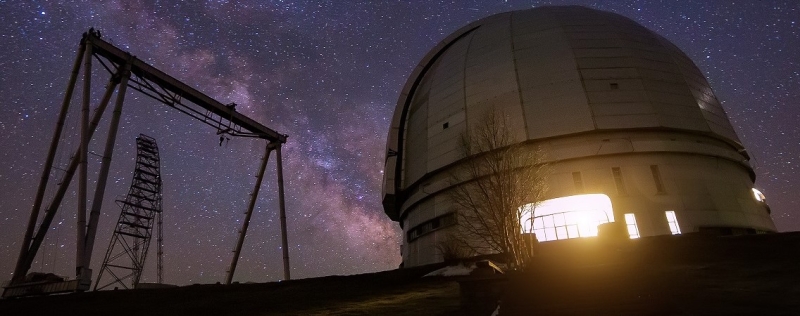
If the stars attract you more than other cities and countries, you can arrange an unusual trip – visit one of the observatories where excursions are held. We have selected five scientific sites, located in very beautiful corners of Russia, so that after getting acquainted with the stars and planets, you can take a walk around the surrounding area and relax in nature.
Karachay-Cherkessia, Arkhyz: Special Astrophysical Observatory of the Russian Academy of Sciences
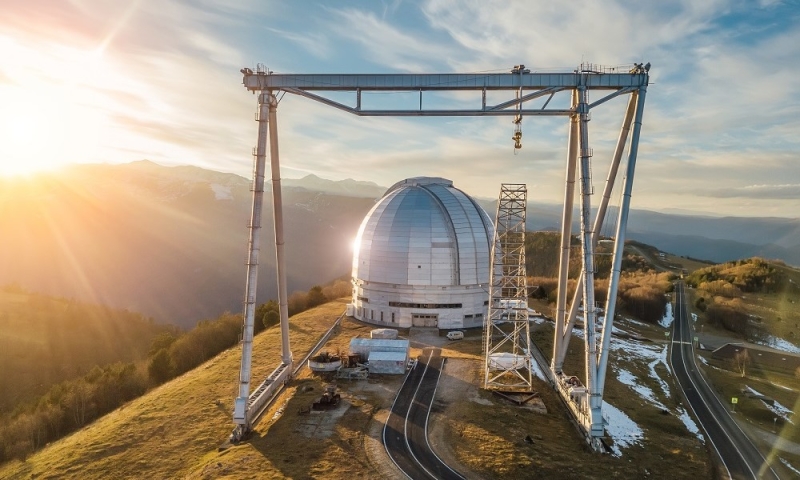
This is the largest observatory in Russia for observing deep space. It is located in the village of Nizhny Arkhyz, not far from the ski resort of the same name. From the outside it is a huge white dome, 53 m high and 44 m wide. At night, an oblong window opens in the roof, and a huge telescope eye peers into the darkness. It is also one of the largest in the world: the diameter of the mirror is 6 m, and it weighs 42 tons.
The location for the observatory was not chosen by chance: back in 1959, 16 reconnaissance expeditions were carried out to determine the most cloudless region of the USSR. Since 1976, the telescope has been operating every night – if the weather is good, of course.
The research institute has another telescope located 20 km from the village of Nizhny Arkhyz, on the outskirts of the village of Zelenchukskaya. Instead of a dome, there is a 600-meter circle on the ground – this is the ring antenna of the world’s largest radio telescope. It is called RATAN-600.
You can come to both sites on a guided tour, but you need to sign up in advance through the official website. A ticket costs 500 rubles for an adult and 250 for schoolchildren (free for preschoolers). We recommend visiting the planetarium with a night tour to look at the stars through the CELESTRON telescope (it starts after dark in the open air at an altitude of 2070 m, so dress warmly at any time of the year).
How to get there: most conveniently from the village of Nizhny Arkhyz. The nearest airport is in Mineralnye Vody. Round-trip ticket – from 11,000 rubles*, flight lasts 3 hours 40 minutes.
Where to stay:
- Guest house Solaris Guest House (rating 9.9). Room rates from 3,000 rubles* per night.
- Hotel KORONA Arkhyz (rating 8.6). Room rates from 3,500 rubles* per night.
- Five-star hotel Arkhyz Royal Resort & Spa (rating 10). Room rates from 16,500 rubles* per night.
St. Petersburg: Pulkovo Observatory
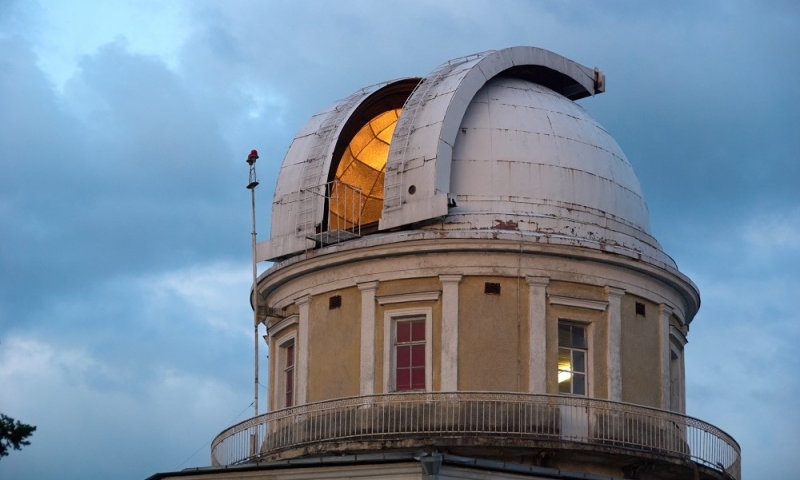
The observatory in St. Petersburg was created by decree of Emperor Nicholas I and has been operating since 1839. In the 19th century, the famous American astronomer Benjamin Gould called it the astronomical capital of the world. During the Second World War, the observatory building was almost completely destroyed, but after it was restored under the leadership of the architect A.V. Shchusev, who used the original drawings.
Today the Pulkovo Observatory is a modern, intensively developing scientific institute. Here they carry out work in various fields of astronomy and constantly improve methods for observing space objects. You can get inside as part of a group accompanied by a guide. Thematic excursions are also conducted. For example, they talk about black holes or solar activity (schedule here). The ticket price depends on the chosen excursion.
How to get there: the observatory is located in St. Petersburg at Pulkovskoye Highway, building 65.
Where to stay:
- Hotel KVARTAL (rating 8.6). Room rates from 2,800 rubles* per night.
- Four-star hotel Airportcity Plaza St. Petersburg (score 10). Room rates from 6,000 rubles* per night.
- Five-star Tsar Palace Luxury Hotel & SPA (score 10). Room rates from 12,900 rubles* per night.
Kazan: Astronomical Observatory of Kazan University named after V.P. Engelhardt
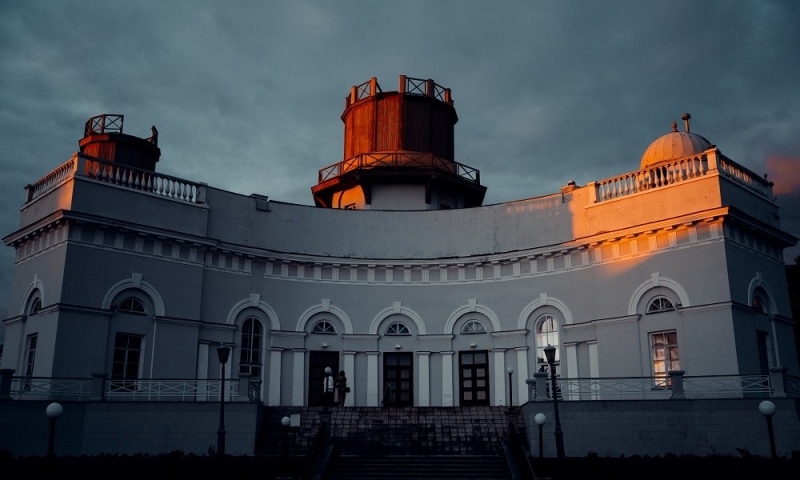
The observatory is located near Kazan, in the village of Oktyabrsky. This place has a rich history – the first building here was built in 1814, and astronomy began to be studied back in 1810. The complex in the form in which it has survived to this day appeared at the beginning of the 20th century. Today it is included in the UNESCO World Heritage List.
There are 12 operating telescopes in the AEO, including the most modern ones. By the way, all the old telescopes also work, but are museum pieces. Here you can also see unique astronomical instruments made in Germany in the 19th century – a heliometer and a meridian circle.
At the observatory there is a planetarium, where day and night programs are held for everyone. Details and schedule can be found on the official website. The standard program includes an interactive excursion, an astronomical lecture and a star show, as well as a viewing of a fulldome film. The duration of the session is one and a half hours, an adult ticket costs 450 rubles, a child ticket costs 400 rubles.
How to get there: from Kazan you can get to the observatory by train in 40 minutes. Address: Oktyabrsky village, AOE street, 7, bldg. 1. The most convenient way to get to Kazan is by plane. A round-trip ticket from Moscow costs from 5,100 rubles*, the journey takes 1 hour 40 minutes.
Where to stay:
- Apart-hotel “On Pushkina 26” (score 9.6). Room rates from 5,500 rubles* per night.
- Four-star hotel “Cosmos Kazan” (score 10). Room rates from 7,100 rubles* per night.
- Four-star hotel “Raymond” (rating 9.2). Room rates from 8,600 rubles* per night.
Irkutsk: Baikal Astrophysical Observatory
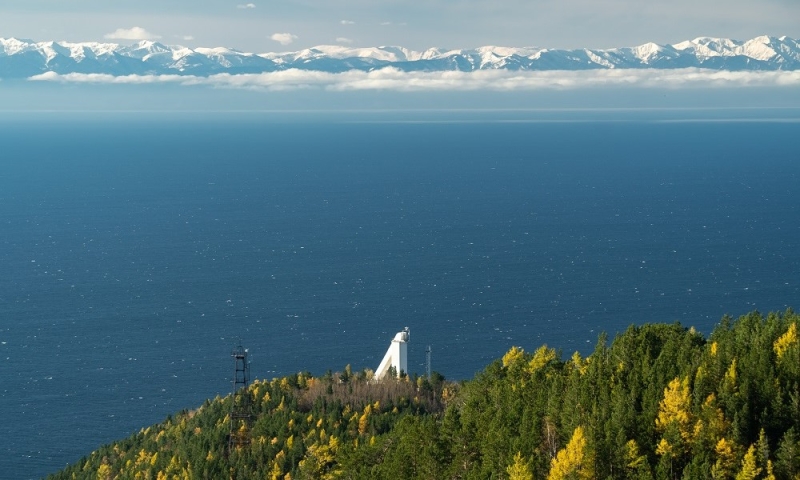
This observatory is located in a very beautiful place: right on the shore of Lake Baikal, in Listvyanka. The main object here is the Large Solar Vacuum Telescope (LSVT), built back in 1980 to study the activity and magnetic fields of the largest star in our universe. One of the main objects of research is solar flares. The results are used to develop methods for predicting solar activity.
By the way, the telescope remains the largest in Eurasia today. Its height is 25 m, approximately the same as a nine-story building. There are also four more solar telescopes at the observatory, but smaller ones.
You can get to the site on one of the official tours. Only an old-style telescope is open to tourists, which is no longer used for research. But through its lens you will be able to see the solar disk, and sometimes even spots on its surface and flares. In the evening you can observe the Moon, planets, galaxies and nebulae. All excursions last from one to two hours, ticket prices are indicated on a separate website. The guides are professional astronomers who tell a lot of interesting things. And the site near the BSVT is considered one of the best observation points on Southern Baikal, so you will get the most beautiful photos.
How to get there: the observatory is located at Listvyanka, st. Partizanskaya, house 29. It is convenient to get from Irkutsk by bus or taxi along the Baikal Highway. And there are regular flights to Irkutsk from Moscow. Round-trip ticket from 33,000 rubles*, travel time 5 hours 45 minutes.
Where to stay:
- Hotel “Mayak” (rating 9.3). Room rates from 4,300 rubles* per night.
- Three-star hotel “Krestovaya Pad” (rating 8.9). Room rates from 6,400 rubles* per night.
- Apartments Baikal Hill Residence (score 9.9). Room rates from 8,800 rubles* per night.
Pushchino Radio Astronomy Observatory AKC FIAN
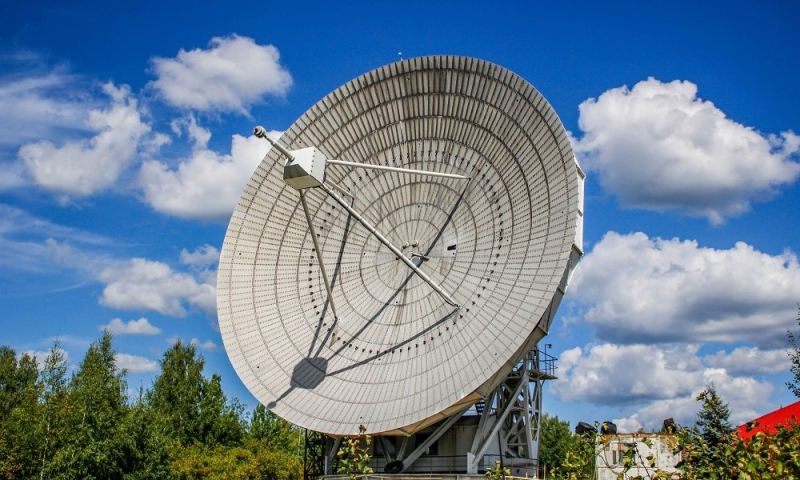
In the town of Pushchino near Moscow, there is the oldest scientific institution in Russia that deals with radio astronomy. This observatory was founded in 1956, and it was its employees who discovered the supercorona of the Sun. Today, pulsars are being studied here and dynamic processes in circumsolar and interplanetary plasma are being studied.
The observatory has three radio telescopes. True, from the outside they do not look as large as other observatories: for example, the BSA radio telescope is an antenna array and to an outside observer it looks like a huge accumulation of wires (the area of the array, by the way, exceeds seven hectares). Moreover, the BSA is one of the most sensitive telescopes in the world. Another radio telescope, DKR-1000, consists of a number of antennas (their length is 1 km). For tourists, the most interesting thing is the RT-22 radio telescope of the Lebedev Physical Institute – a large “dish” with a diameter of 22 m.
The Observatory regularly holds open days. The program includes a sightseeing tour with inspection of telescopes, stories from guides about how radio astronomers work and what they study, as well as lectures and a master class. And if the weather permits, stargazing with optical telescopes takes place in the evening. Find information about open days on the official website.
How to get there: the observatory is located in the town of Pushchino near Moscow (Radiotelescopnaya str., building 1A). It is convenient to get there from Moscow by car or by bus from the Lesoparkovaya metro station, the journey takes from 40 minutes to an hour and a half, depending on traffic jams.
Where to stay:
- Hotel “Meridian” (rating 8.2). Room rates from 3,500 rubles* per night.
- Park Hotel “Vozdvizhenskoye” (score 10). Room rates from 7,000 rubles* per night.
- Country hotel Chekhov Api (rating 9.1). Room rates from 8,800 rubles* per night.
*Prices are current at the time of publication.
Looking for a convenient hotel booking service?There are over two million properties on OneTwoTrip.

